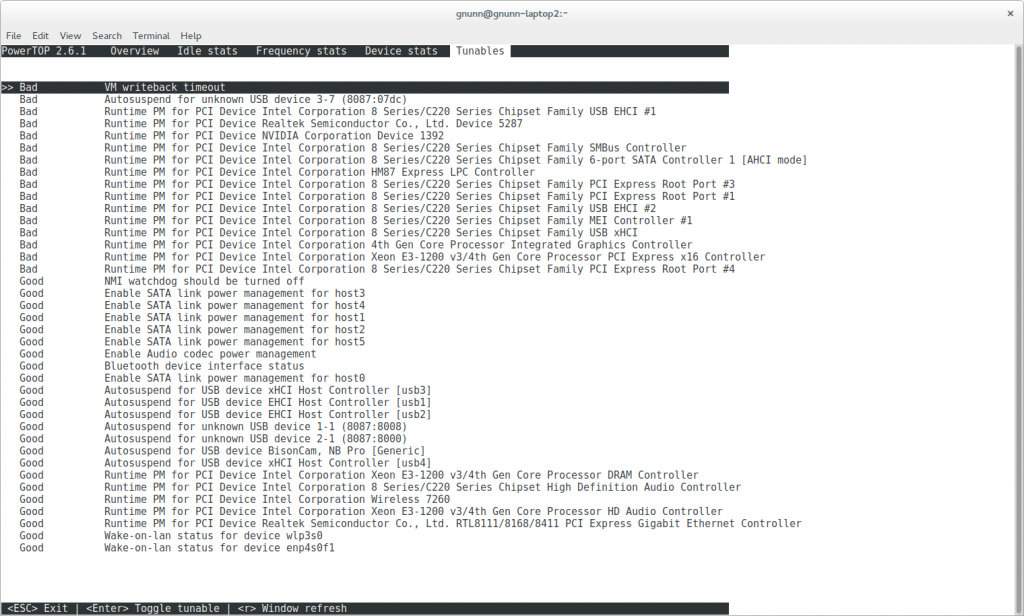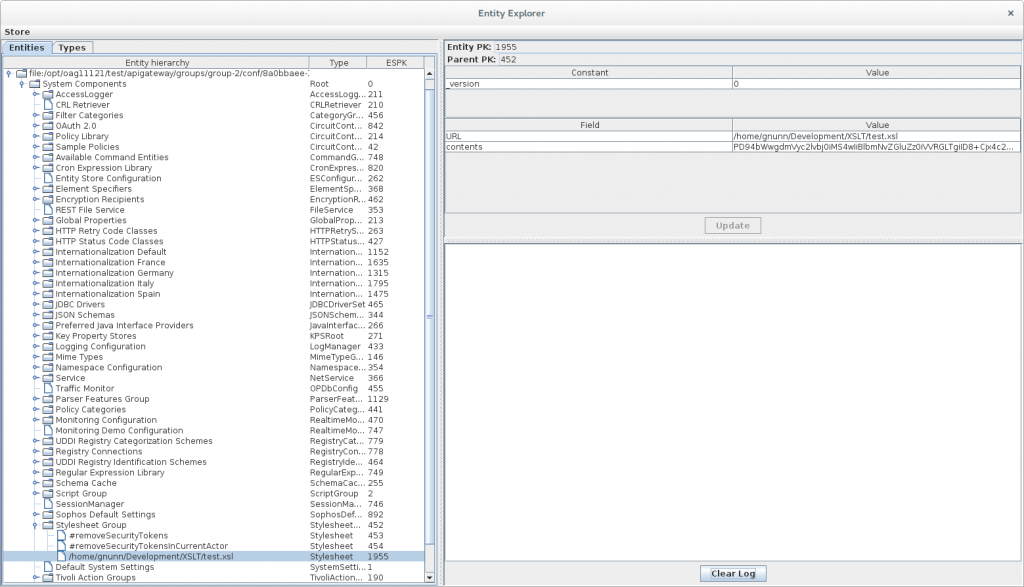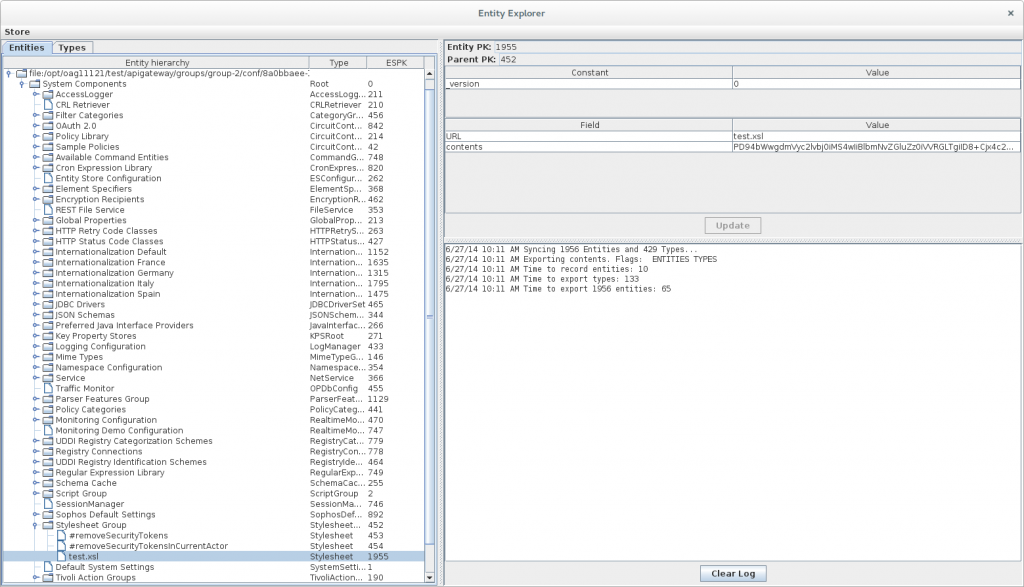Introduction
I recently opted to replace my beloved Sony Vaio Z (SVZ) laptop with a new Clevo w230s laptop. While the Vaio Z had served me well, it had a couple of limitations that were really starting to annoy me. Specifically, the Vaio Z was limited to 8 GB and the 256 GB SSD could only be increased by replacing them with an expensive 512 GB Sony proprietary model. Finally the external AMD GPU of the Vaio, while neat in concept, would only work in Linux with the open source driver and performance was atrocious.
Prior to the Vaio Z I had owned a Clevo machine that I purchased from Mythlogic, while not particularly attractive and a bit of a brick, it was powerful, easily upgradeable and user maintainable. This laptop is still going strong and being abused as my 13 year old son’s gaming laptop, it’s durability in this role has been very impressive.
Based on that positive experience, I purchased the Clevo w230ss from Reflex Notebook and the purchase went well with no issues as the laptop showed up at my door approximately four weeks later. I opted to use a Canadian company instead of Mythlogic this time as I wanted to support a Canadian alternative for Clevo/Sager resellers and didn’t feel like driving to Ann Arbor this time for the tax savings. I do highly recommend Mythlogic though, they were an excellent bunch to deal with last time.
Anyways, I thought it would be fun to do a short review of the laptop particularly from a Linux perspective since Linux is my primary OS for day to day work. Please keep in mind that I use Arch Linux which is a rolling release distro in that you are always running the latest and greatest. Thus there is a chance that while some things work fine for me they may not be functional under other distros such as Ubuntu which may have a slightly older kernel.
So with all of that in mind, lets move on to the review.
Appearance

Clevo w230ss
The w230ss laptop has an appearance that could be best described as functional. It’s not a particularly sexy laptop, like a Macbook or my Vaio Z, but it’s not ugly either. The two tone finish of the laptop with silver on the inside and black on the outside is reasonably attractive and fits in well in the corporate environment. In some ways, the w230ss reminds of “sleeper” cars which are the cars when you look at them seem like perfectly ordinary family sedans but hide an enormous amount of power under the hood.
The back of the LCD is a rubberized material which feels nice but attracts skin oil like there is no tomorrow. On the whole though I like the rubberized finish.
Ports
This is the biggest issue with the laptop. While the number of ports are certainly sufficient (3 USB 3.0, 1 USB 2.0, HDMI, VGA, Ethernet) the layout is pretty crap-tastic. The right side of the laptop has the 3 USB 3.0 ports, HDMI, VGA and Ethernet and unfortunately the ports start right at the front which means if you use a mouse and are right handed plugging anything in will interfere with the mouse. The only work around I can see is buying some right angled cables off the net to keep the cables close to the side of the laptop.
The left side has the single USB 2.0 port and once again it is right at the front along with the 1/8” mic and headphone jack. Even if you don’t use the USB port on the left, left handed mouse users will find the left side is no better then the right since the fan vents here. In winter it’s great as your hand gets nice and toasty when gaming, other times not so much.
The one port I wish was included is display port so that high resolution monitors could be used. While HDMI is getting better in this regard it still has limitations at higher resolutions which won’t be addressed until HDMI 2.0 is available.
Keyboard
The keyboard feel is much better then my Vaio Z and is a pleasure to use, one of the better laptop chiclet keyboard that I’ve used over the last few years. As a software developer I am extremely thankful that Clevo designed the keyboard with full size arrow keys, this trend started by Apple towards half size arrow keys on laptops has been driving me insane.
Also, the inclusion of dedicated keys for Home, End, Page Up and Page Down is a welcome sight as I constantly use these keys to navigate code. On most smaller laptops such as my Vaio Z accessing these keys typically involves using the Fn key in combination with the arrow keys which I find quite irritating.
Finally the keyboard has three levels of back-lighting (None, Low, High) and the back-light key works fine under Linux for controlling it. However I don’t see any way to automate the control of the keyboard light as it doesn’t appear to have a device listed under /sys/class/leds, there is a phy0_led but its brightness value doesn’t change.
Trackpad
It works under Linux but since I never use it I can’t speak to the quality of it.
Display
My laptop came with the 1080p FHD display, displays with larger resolutions are available however I would highly recommend checking that your preferred Linux Desktop Environment (DE) supports HiDPI displays well before purchasing one.
The 1080p display on this laptop is nice and bright compared to my Sony Vaio Z. Viewing angles are very good and text is nice and easy to make out. Some users might opt to use scaling but in Gnome I have no issues reading text with scaling off (scaling factor of 1), everything is crisp and sharp. The display is matte, not glossy, and thus has minimum reflectivity even in office environments with overhead fluorescent lighting.
Power Management
I’m using Arch Linux with TLP to provide active power management, I also use bumblebee to disable the Nvidia GPU unless it is needed. TLP does a great job of managing power, with it enabled the screenshot below shows the tunables from Powertop and the ones in the Bad category are not things you typically would want to tune.

Powertop Screenshot
Under Arch I get about 5 to 5.5 hours of light use under battery with the screen dimmed to about 75%. The wattage being consumed is 15.5 watts as per powerstat.
Temperature and Fans
There are some complaints on various forums with respect to fan noise for the w230st and to a lesser extent the w230ss. This concerned me as I like my laptop to be as silent as possible when using it for work. I’m please to report though I find them mostly unfounded and have been very happy with the noise profile of this laptop.
When doing basic tasks in my home office, the CPU temperatures are around 45 Celsius and the laptop is dead quiet with the fans never spooling up. At the office when I’m doing coding, running servers, etc the CPU temperatures are between 50 and 60 degrees. In this scenario the fans will spin up lightly every once in a while but I find it to be barely noticeable and not distracting. It’s certainly not the on/off pattern so many people were complaining anout with the w230st.
In terms of gaming, I’ve only tried the Witcher 2 in both Linux and Windows. Unfortunately the Linux port of Witcher 2 is awful and the performance was atrocious so I didn’t bother looking at temps as I quickly moved over to Windows. Under Windows, the CPU temperature is about 80 degrees while the GPU is 71. This is in high settings with Bloom disabled.
When playing the Witcher 2 the fans are running constantly and the volume is correspondingly louder, after all you can’t pack this much power in a small laptop and expect silent fans when gaming. Speaking for myself though, I find the fan noise is drowned out by the game music and effects that I just don’t find it very noticeable. I will say though that if I accidentally place a drink with-in 6 inches of the exhaust fan on the left side it will quickly warm up. I’ve ruined more then one cold drink by doing this.
Dual Booting
As I mentioned in another post, I dual boot between Linux and Windows using rEFInd as the EFI boot manager. No issues with this setup except I had to adjust a Windows registry setting to ensure that time and time zones where treated the same in both OSes as per this blog post here.
One benefit of rEFInd is it will auto-detect any EFI boot loaders on USB sticks making it trivial to boot maintenances tools like an Arch Live USB or Gparted. This is much more convenient then trying to mess with the BIOS boot loader settings. Another benefit is not having to deal with GRUB any longer.
Summary
So in summary this is an excellent alternative for the Linux user looking for a powerful laptop with gaming capabilities.





